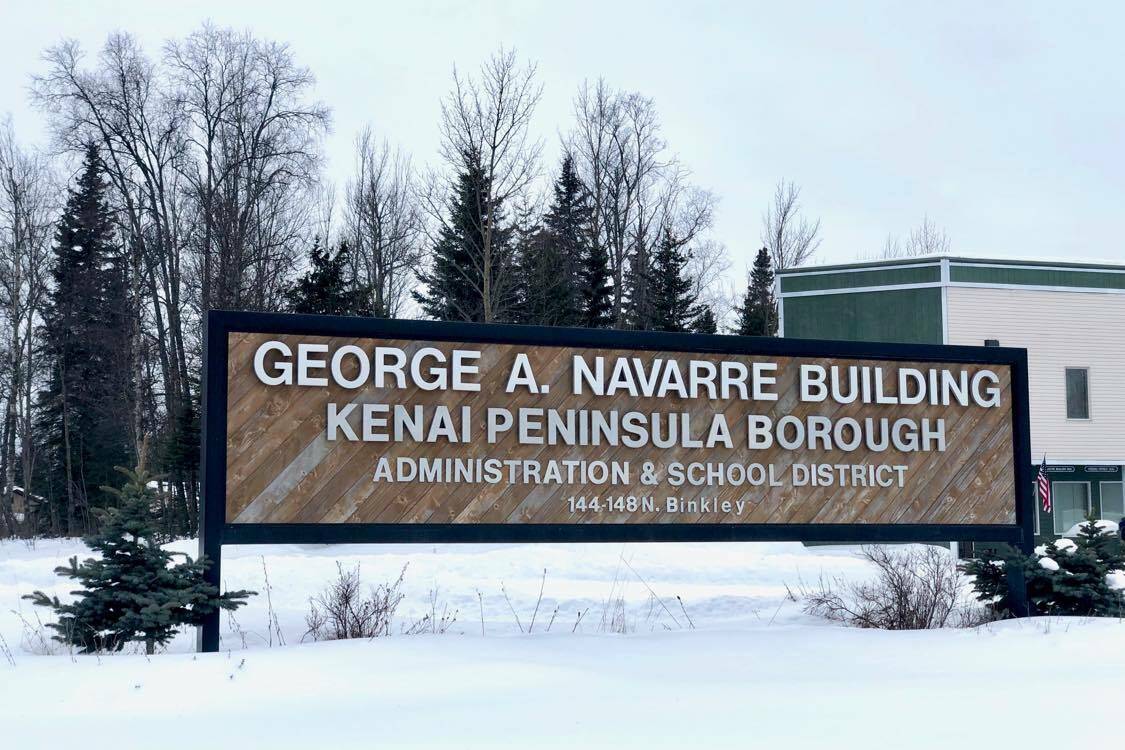Lower property taxes and full funding for education are included in a draft version of the Kenai Peninsula Borough’s budget for the upcoming fiscal year.
Though budget work sessions with borough departments are already underway, Kenai Peninsula Borough Assembly members will get their first chance to discuss the document as a group on Tuesday. The budget draft comes just two months after Peter Micciche stepped in as borough mayor, and reflects many of the commitments he touted while on the campaign trail.
Micciche has been unwavering, for example, in his support for full funding for the Kenai Peninsula Borough School District, where administration announced earlier this year that the district was facing a $13.1 million deficit. That deficit was created in part due to a decrease in funding from the State of Alaska after the assessed value of the borough increased.
The budget proposal being considered Tuesday funds KPBSD to the maximum amount allowable by state law, at just under $54.8 million. Minimum and maximum contributions to school districts by local governments are determined at the state level.
That amount is in addition to $4.9 million the proposed borough budget includes for bond debt service. Of that amount, the borough expects to be reimbursed by the State of Alaska for $1.8 million. An additional $4 million is budgeted for capital projects at KPBSD facilities, which are owned by the Kenai Peninsula Borough.
In all, the draft budget being considered Tuesday would designate $63.7 million for all education purposes, including operating funds, maintenance projects and debt payments. Education spending is the largest component of the borough’s budget, with all of the borough’s sales tax revenue going to the school district.
This year, the borough is expecting sales tax revenue to increase by about $7.6 million, to about $47 million total. Micciche and Finance Director Brandi Harbaugh in an introductory letter in the budget cited a “significant increase” in retail from sales, inflation increases and higher fuel prices as reasons for the spike in revenue.
Under the proposed budget, property taxes for borough residents would decrease by two-tenths of a mill, from 4.5 to 4.3 mills. The Kenai Peninsula Borough mill rate most recently changed last budget cycle, when then-Mayor Charlie Pierce successfully proposed a decrease from 4.7 to 4.5 mills.
Mill rates are used to figure out how much someone will pay in property taxes during a certain fiscal year. To calculate how much property tax they expect to pay, an individual must divide the mill rate by 1,000 and then multiply that by their property’s taxable value.
Also described in the draft budget, which is just under 470 pages long, is the use of $11.4 million from the borough’s general fund for solid waste services and $2.2 million for the fund that pays for projects in the borough’s Road Service Area. An additional $2.2 million for that fund is proposed each year for the subsequent fiscal years.
The amount of money the borough spends on employees would go up by about $1 million due to changes to the borough’s collective bargaining agreement. However, Micciche and Harbaugh wrote that the budget does not add any new full-time positions, though some were requested by borough departments.
“In reviewing the department and service area budget requests, the Mayor considered carefully the thoughts of the management staff, service area boards, and the assembly and borough citizens,” the letter says. “In the end, FTE requests and other reductions were made to the original budgets as submitted. We believe that this budget is consistent with the Mayor’s budget priorities.”
Harbaugh requested in an April 20 memo to assembly members that public hearings on the budget document be held on May 16 and June 6. The full budget document can be found on the borough’s website at kpb.legistar.com.
Reach reporter Ashlyn O’Hara at ashlyn.ohara@peninsulaclarion.com.

